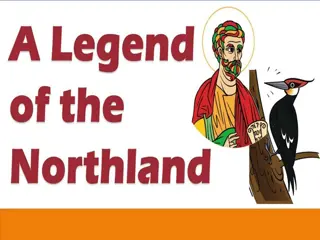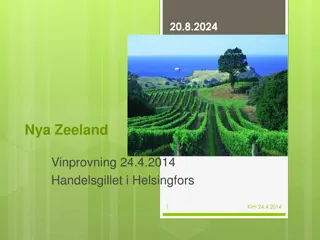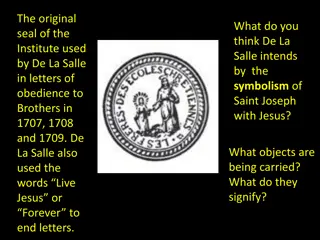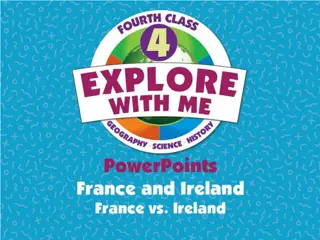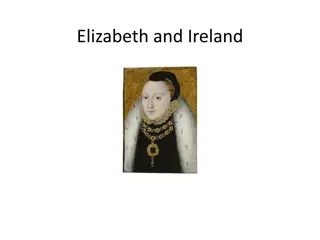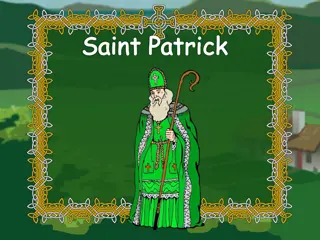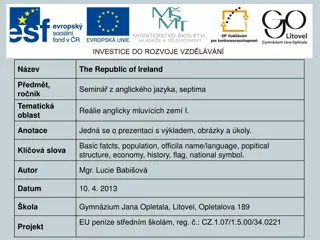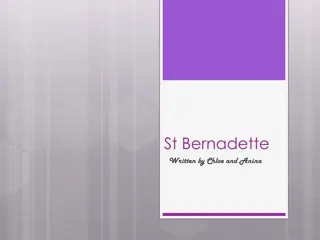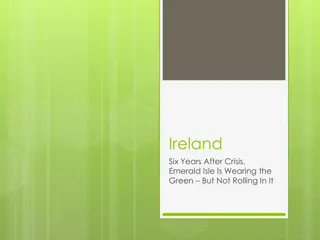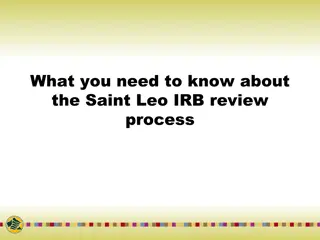Discovering the Legend of Saint Patrick in Ireland
Saint Patrick, the patron saint of Ireland, is celebrated each year on March 17th. He brought Christianity to the Irish and used the shamrock to explain the Trinity. Legend has it that he banished snakes from Ireland. Explore the rich history and traditions surrounding Saint Patrick's Day in Ireland.
Download Presentation

Please find below an Image/Link to download the presentation.
The content on the website is provided AS IS for your information and personal use only. It may not be sold, licensed, or shared on other websites without obtaining consent from the author. Download presentation by click this link. If you encounter any issues during the download, it is possible that the publisher has removed the file from their server.
E N D
Presentation Transcript
Dictionary bl ni kl v d Blarney clover Jig Leprechaun lepr k n Rainbow Reel Saint Patrick se nt p tr k Shamrock Decent di:s ( )nt Steeple sti:p( )l Banish b ni re nb ri l mr k
The Poem Saint Patrick was a gentleman, He came of decent people. In Dublin town, he built a church, And on it put a steeple. His father was a Brallaghan, His mother was a Brady His auntie an O Callaghan, His uncle an O Grady So success to bold Saint Patrick s fist, He was a saint so clever. He gave the snakes an awful twist, And banished them forever.
Put in the words, use the box below: _________is celebrated each year_____. In Ireland, Saint Patrick s Day is both a ____day and a national ______holiday. Saint Patrick is the ______ saint of Ireland as he was the one who brought __________ to the Irish. Christianity, holy ,on March 17th, Saint Patrick s Day, national, patron
Saint Patricks Day is celebrated each year on March 17th. In Ireland, Saint Patrick s Day is both a holy day and a national holiday. Saint Patrick is the patron saint of Ireland as he was the one who brought Christianity to the Irish.
According to legend, Saint Patrick used a shamrock to explain about God. The shamrock, which looks like clover, has three leaves on each stem. Saint Patrick told the people that the shamrock was like the idea of the Trinity that in the one God there are three divine beings: the Father, the Son and the Holy Spirit.
Another tale about Patrick is that he banished the snakes from Ireland. Different versions of the story, tell of him standing upon a hill, using a wooden staff to drive the serpents into the sea, banishing them forever from Ireland.
Nowadays Saint Patricks Day is celebrated with parades with the procession of brass bands, eccentric suits, folk dancers and laughing persons by hundreds of millions of people. On this day, the whole world - from Dublin to Sidney and from New York to Moscow and Saint Petersburg - becomes Irish.
A common idiom is "to be in clover", meaning to be living a carefree life of ease, comfort, or prosperity.
The Leprechaun is an Irish fairy. He looks like small, old man (about 2 feet tall), often dressed like a shoemaker, with a cocked hat and a leather apron. According to legend, leprechauns are aloof and unfriendly, live alone, and pass the time making shoes. They also possess a hidden pot of gold. Treasure hunters can often track down a leprechaun by the sound of his shoemaker's hammer. If caught, he can be forced (with the threat of bodily violence) to reveal the whereabouts of his treasure, but the captor must keep their eyes on him every second. If the captor's eyes leave the leprechaun (and he often tricks them into looking away), he vanishes and all hopes of finding the treasure are lost. Near a misty stream in Ireland in the hollow of a tree Live mystical, magical leprechauns who are clever as can be With their pointed ears, and turned up toes and little coats of green The leprechauns busily make their shoes and try hard not to be seen. Only those who really believe have seen these little elves And if we are all believers We can surely see for ourselves. (Irish Blessing)
Irish dancing is an ancient tradition that managed to survive over time. When the Celts came to Ireland from central Europe 2000 years ago, they brought with them their folk dances. Irish dancing, popularized in 1994 by the world-famous show "Riverdance", is notable for its rapid leg movements, body and arms being kept largely stationary. Irish dances are accompanied by playing of bagpipes and harp. Most Irish music is made for dancing mainly three types of tunes: reels, jigs and hornpipe. The dance for the dance groups is called Ceili or set dancing. . The dance is still the part of social culture in Ireland. Children, teenagers and adults compete in competitions for various titles and awards. The competition is solos and group dances and competitors are divided according to age.









